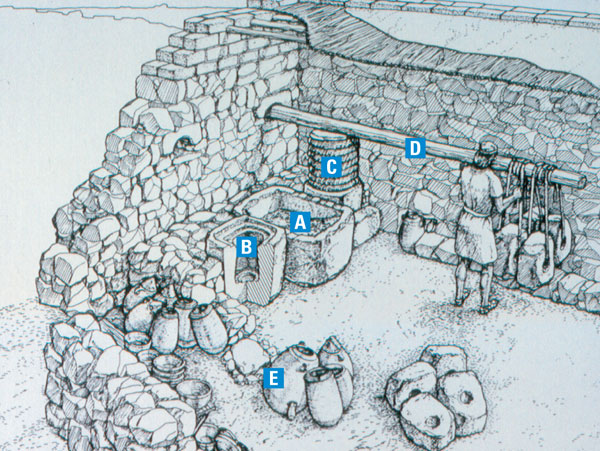Image Details

Erez Cohen
Ekron became an industrial powerhouse in the seventh century B.C.E., serving as the largest olive-oil production center that we know of from antiquity. Archaeologists have uncovered 115 installations so far, and less than four percent of the site has been excavated. Ekron produced between 500 and 1000 tons of olive oil annually.
The olives were first crushed by a stone roller in a large stone basin (marked A); this produced the finest oil. The remaining pulp was gathered in straw baskets, which were placed on stone presses (B and C in the illustration) that flanked the crushing basin. A wooden beam (D) weighted with four 200-pound weights then pressed the pulp. The oil squeezed from the baskets was then poured into storejars (E in the illustration), where it would separate from the watery residue.
Though Ekron exported olive oil, the know-how for producing it was likely imported from the city’s neighbors in Judah, where olive oil was produced centuries earlier. Ekron’s industry is thus another example of the Philistine ability to adopt aspects of other cultures, in this case, borrowed technology.
